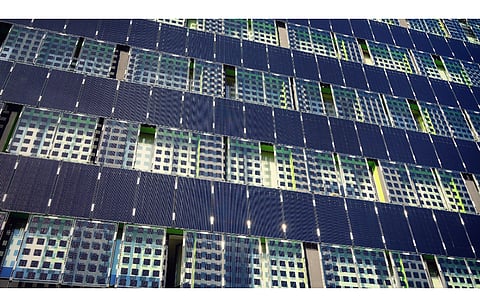

A team of researchers from the Korea Institute of Materials Science (KIMS) have created what they claim is the world's 1st transparent thin-film solar cell on a flexible substrate with different reflective colors. Further, it does not significantly reduce the solar cell's efficiency, they add.
To arrive at the perfect combination, the researchers formed multilayer thin– films with various refractive indices using the vacuum sputtering deposition method that's deployed in general semiconductor and solar cell manufacturing processes.
By periodically incorporating hydrogen into zinc oxide material doped with aluminum, which is a transparent electrode, the team from the Department of Energy & Electronic Materials at KIMS was able to achieve reflective color with only a single material.
They minimized the reflection loss in the visible light region absorbed by the solar cell by designing a multi-layer thin-film with an extremely low refractive index difference of less than 5%. It can also be applied to various absorbers for thin-film solar cells.
According to the team, this is expected to serve as a benchmark to improve the aesthetics of flexible substrate transparent thin-film solar cells for building integrated photovoltaic (BIPV) and vehicle integrated photovoltaic (VIPV).
"When commercialized, this technology will help to develop simple and process-free light filter technology and high-efficiency colored flexible substrate transparent thin-film solar cells, as well as to realize BIPV systems for modern buildings and VIPV systems for vehicles with aesthetic features," said Principal Researcher Dr. Jung-dae Kwon.
Since a multilayer transparent thin-film electrode based on a single material can do without additional processing, the team believes various colors and high efficiency of thin-film solar cells can be realized at a low cost. The reflective color as an optical filler can also be applied to various fields as image sensors, photolithography masks, and infrared shielding.
Going forward, the KIMS team is now actively conducting follow-up research for colorful solar modules that keep the practical aspects of BIPV and aesthetics intac
